Ahead of Independence Day, explore these literary treasures that chronicle the unsung heroes and untold narratives that shaped a region's fight for liberation.

The books unveil a unique chapter of South India's resolute journey towards independence. (Supplied)
Step into history’s embrace this Independence Day with a selection of six meticulously-curated books by Penguin India.
Across fiction and non-fiction, these narratives shed light on lesser-known stories and resounding courage, illuminating South India’s journey to freedom.
Join South First in this engaging prelude to Independence Day, as we delve into narratives that capture the essence of an extraordinary fight for liberation.
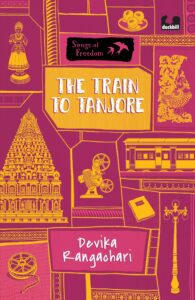
The book explores the struggles South Indians faced during the Independence movement. (Penguin India)
Looking at the impact of the Quit India Movement on the city of Thanjavur, this book maps how the lifeline of the town, the Mannargudi train station, is vandalised during the agitation.
An award-winning writer of historical fiction, Devika Rangachari centres the story around 10-year-old Thambi, who is inquisitive to learn about the past and future of his hometown.
He becomes observant of his surroundings — the threat of Japanese bombings, the police’s vigilance at the train station, the initial inhibitions in his Appa’s heart, and Velu Anna’s involvement in the protests.
While this story highlights that anyone can stand up for their rights, it also explores the struggles children in South India faced during the Independence movement.
To buy, visit Amazon
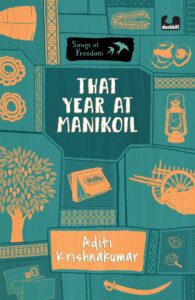
The book touches upon themes such as girls’ education and empowerment. (Penguin India)
Based on the repercussions of the Burma War between British India and the Japanese Army, the book centres around Raji and her sisters who are sent off to live in Manikoil, in their mother’s village in 1944.
Away from the war but also terribly embroiled in it through her brother who decides to enlist in the British Indian Army, Raji feels the whiff of independence in the air.
When Ilavarasi, her new friend, also lets on that she’s a refugee of the war, Raji is forced to come to terms with its devastation.
Amid all this, rumours swirl that Gandhi thatha might be assassinated, prompting the freedom fighters to enlist the help of Raji and her friend Lakshmi to deliver secret letters discreetly.
The book provides a glimpse into the role the South had to play during the freedom struggle, apart from touching upon themes such as girls’ education and empowerment.
To buy, visit Amazon
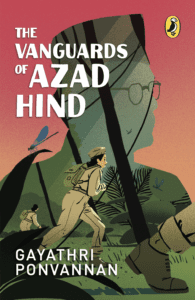
The novel is a great primer on the Azad Hind Fauj. (Penguin India)
It’s not easy being fifteen years old.
At least, Kayal does not find it easy. The year is 1943, a World War is going on, and the country is all caught up in the freedom struggle. And to top things off, Kayal’s parents have gone on to fix her marriage.
When an opportunity arises to accompany her aunt to Rangoon from her hometown in Chennai, Kayal throws caution to the winds and joins the trip.
She joins the Rani Jhansi regiment, the Azad Hind Fauj’s all-female unit.
Kayal’s action-packed encounters on the battlefield and her year-long journey provide middle-grade readers with a perfect introduction to the trailblazers who fought for India’s freedom.
To buy, visit Amazon
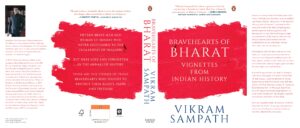
The book explores the lives, times, and works of long-forgotten freedom fighters. (Penguin India)
From Martanda Varma of Travancore to Rani Rudrama Devi of Warangal — the book Bravehearts of Bharat: Vignettes from Indian History explores the lives, times, and works of long-forgotten and mostly neglected fifteen heroes and heroines of our past.
This book brings to light the contribution of the warriors who not only donned armour and burst onto the battlefield but also kept the flame of hope alive under adverse circumstances.
To buy, visit Amazon
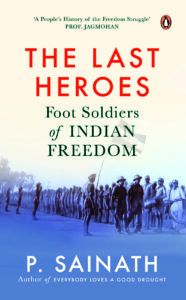
In The Last Heroes, foot soldiers of Indian freedom share their stories. (Penguin India)
So, who spearheaded India’s freedom struggle?
Millions of ordinary people — farmers, labourers, homemakers, forest produce gatherers, artisans, and others — stood up to the British.
People who never went on to be ministers, governors, presidents, or hold other high public office. They had this in common: their opposition to Empire was uncompromising.
In The Last Heroes: Foot Soldiers of Indian Freedom, these foot soldiers of Indian freedom tell us their stories.
The men, women, and children featured in this book hail from different regions, speak different languages, and include atheists and believers, Leftists, Gandhians, and Ambedkarites.
The people featured pose the intriguing question: What is freedom? They saw that as going beyond independence. And almost all of them continued their fight for freedom long after 1947. The post-1947 generations need their stories.
To learn what they understood. That freedom and independence are not the same thing. And to learn to make those come together.
To buy, visit Amazon
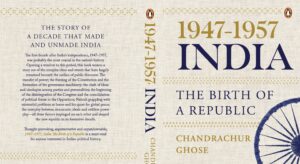
This book weaves a story out of complex ideas and events. (Penguin India)
The first decade after India’s independence, 1947-1957, was probably the most crucial in the nation’s history.
This book weaves a story out of the complex ideas and events that have largely remained beneath the surface of public discourse.
The transfer of power, Constitution framing, ideological clashes, Congress disintegration, global peace efforts, and the interplay of democratic ideals and power dynamics shaped the new republic’s formative decade.
Thought-provoking, argumentative, and unputdownable, 1947-1957 India: The Birth of a Republic is a must-read for anyone interested in Indian political history.
To buy, visit Amazon
To explore more tales of triumph this Independence Day, visit Instagram @PenguinIndia @penguinsters

Apr 20, 2024

Apr 20, 2024

Feb 09, 2024

Jan 29, 2024

Jan 11, 2024

Nov 24, 2023